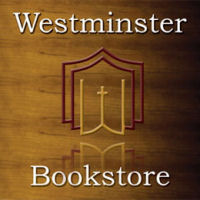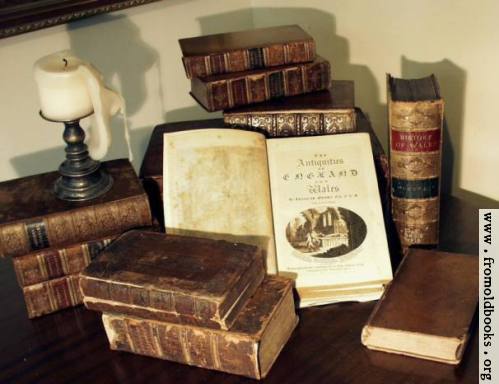 Michael Kruger’s newest book, Canon Revisited, presents a model for understanding the formation of the canon that is meant to avoid reliance upon external authentication. As Kruger explains: “What is needed… is a canonical model that does not ground the New Testament canon in an external authority, but seeks to ground the canon in the only place it could be grounded, its own authority.” In the Reformed world, canonical models have fallen neatly between those advocating a form of the self-authenticating model and those advancing a historically determined model. Amongst those advocating the historically determined model are such Reformed luminaries as B. B. Warfield and A. A. Hodge. Warfield actually roots his understanding of the origin of canon in apostolicity, but the determination of a book’s apostolicity is rooted by Warfield in historical methodology. “It is a most assured result of biblical criticism that every one of the twenty-seven books which now constitute our New Testament is assuredly genuine and authentic.” Elsewhere, Warfield summarizes, “If the historical authenticity of our Canon is to be denied, it must be done at the expense of all our historical sources; at the expense of the falsification of history herself; at the expense of the destruction of the grounds of all historic inquiry.”
Michael Kruger’s newest book, Canon Revisited, presents a model for understanding the formation of the canon that is meant to avoid reliance upon external authentication. As Kruger explains: “What is needed… is a canonical model that does not ground the New Testament canon in an external authority, but seeks to ground the canon in the only place it could be grounded, its own authority.” In the Reformed world, canonical models have fallen neatly between those advocating a form of the self-authenticating model and those advancing a historically determined model. Amongst those advocating the historically determined model are such Reformed luminaries as B. B. Warfield and A. A. Hodge. Warfield actually roots his understanding of the origin of canon in apostolicity, but the determination of a book’s apostolicity is rooted by Warfield in historical methodology. “It is a most assured result of biblical criticism that every one of the twenty-seven books which now constitute our New Testament is assuredly genuine and authentic.” Elsewhere, Warfield summarizes, “If the historical authenticity of our Canon is to be denied, it must be done at the expense of all our historical sources; at the expense of the falsification of history herself; at the expense of the destruction of the grounds of all historic inquiry.”Kruger's Self-Authenticating Model
When Kruger says that the canon “must be self-authenticating,” he means that “the canon guides, controls, and determines how it is authenticated.” As he says elsewhere: “A self-authenticating canon is not just a canon that claims to have authority, nor is it simply a canon that bears internal evidence of authority, but one that guides and determines how that authority is to be established.” Kruger’s model for self-authentication, then, does point to apostolic authority as grounding the Scriptures, as Warfield does, but he avoids the trap that the historically determined models fall into by explaining that his criteria for canonicity are drawn from the canon itself and not exclusively from history. “The method by which the canon is authenticated is correlative with the nature of the canon being authenticated. The two must be consistent with one another.” Put another way, “where else would we turn to acquire this information but to the very scriptural books in question?”
Kruger argues that God has provided a “proper epistemic environment in which belief in the canon could be reliably formed.” This epistemic environment involves three components: (1) providential exposure, which means God in his providence ensures that the church is exposed to and receives the canonical books; (2) attributes of canonicity, reflecting the fact that all canonical books have three features, which are (2a) divine qualities, (2b) Corporate reception by the church, and (2c) Apostolic origins; (3) the internal testimony of the Holy Spirit to counteract the noetic effects of sin.
Kruger belabors the interrelatedness of the three attributes of canonicity. These attributes are all connected and the one cannot stand without the others. If one were to be removed (or considered apart from the other two) then the whole thing would become distorted.
In examining Turretin’s view of the formation of canon, it is important to keep in mind that Kruger’s model does not exclude historical discussion. The self-authenticating model, in a sense, takes all that is good in the other models and combines them into one. “While the self-authenticating model should be clearly distinguished from these other canonical models, it has also served to unite them by combining their greatest strengths into one system.” The self-authenticating model recognizes the personal aspects of recognizing Scripture without falling into the individualism of the neo-orthodox subjectivism. It recognizes the historical nature of the canon without becoming a prisoner of this or that new historical trend or development.
[In the interest of making this series readable in the blog format, footnotes have been left out. Once the last part of the series is posted, I will make available a PDF of this article in its entirety, complete with footnotes. In Part 2, we will look specifically at Turretin's discussion of the self-authenticating nature of the canon.]



No comments:
Post a Comment
Before posting please read our Comment Policy here.
Think hard about this: the world is watching!